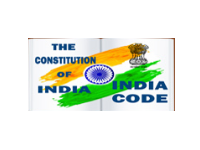Strengths and Weaknesses of the Current System of Performance Appraisal
3.1 Based on feedback received during its meetings with several officers, the responses received through letters, e-mail, and over the web, as well as from the experience of its own members, the Group identified the following strengths in the present practice of performance appraisal:
- The system had been tried and tested over several years and everyone was familiar with it.
- It did encourage a certain degree of consciousness of the need to pre-set one’s annual work plan.
- Being co-terminus with the financial year, it permitted work plans to be drawn up for a financial year
- It encouraged a certain degree of discipline in the system and a sense of respect for authority and the chain of command.
3.2 Unfortunately, however, several weaknesses existed in the original design of the system and others crept in over the years. These are:
- Since the system is non-transparent, except in respect of communicating “adverse” entries, it does not give feedback to officers about their areas of strength and potential. It also does not motivate officers through recognition of good work accomplished.
- The monitoring system for the timely writing of the reports is extremely weak. As a result there is considerable delay in the writing of annual reports, even though there are instructions specifying cut off dates for different stages in the reporting process. The delays often go undetected till promotions become due. In many cases, reports of several years are written together, thus eroding the objectivity of the assessment. Besides, the evaluations of Reviewing Officers and Accepting Authorities are often not available on account of their having demitted office, in which case the reports are deprived of valuable inputs.
- There is generally no report on officers who are on deputation outside the governmental system, even though existing instructions require reports to be written for such periods also. Besides, performance in training/study courses is not taken into account, even though officers often attend such courses at a substantial cost to the government and, in any case, on government time.
- There is an acute problem of grade inflation, with a very large proportion of the officers being graded as “very good” or “outstanding”. Under a normal distribution curve, the most frequent grading should be in the “good” category whereas, in actual practice the distribution is skewed towards the “Very Good” and “Outstanding” categories. This is largely due to the tendency of maintaining a Group of subordinates in good humour (referred to as “the happy family syndrome”). This makes it very difficult to identify the really outstanding officers and reward them suitably or weed out the incompetent . As a result, almost all officers get promoted and a high proportion of officers also get empanelled for holding very responsible positions in the Government of India.
- Adverse remarks are rarely given due to the hassles of having to defend such remarks subsequently. Even advisory remarks are not recorded for fear that they would be construed as adverse remarks and will need to be subsequently defended.
- Although the present system requires an annual set of quantifiable targets to be agreed upon in advance between the appraisee and his supervisor, this is rarely done. In most cases the annual targets are decided at the end of the year, after the achievements are already known. As a result, evaluation of performance is not based on monitorable inputs
- There is little moderation for differing standards of assessment of different assessors and personal likes and dislikes tend to intervene.
- There is no clear linkage between evaluation against individual parameters and the overall grading. Implicit weights for different attributes are subjective and variable.
- There is no focus on exceptional work accomplished or manifestly revealed incompetence (e.g. in crisis situations). There is also no provision for recognition of innovation and creativity.
- There is no provision for feedback from juniors and peers on leadership, teamwork skills, behavioral and reputational aspects.
- There is insufficient variance in the structure of the format across differing types of jobs, for example, field versus secretariat assignments, program implementation versus policy formulation assignments, etc.
- There is virtually no evaluation of the core professional competency.
- The current system of records management does not facilitate a trend (individual level) or macro (cadre level) analysis.
3.3 In light of these perceived strengths and weaknesses, the Group decided to address the following issues:
- Objectives of Performance Appraisal
- Need for greater openness
- Better monitoring and scrutiny
- The imperative of computerization
- Staggering cut-off dates to enable higher levels to certify that they have reported on their subordinates before they submit their own report forms
- Number of forms for different levels
- Methods of correcting upward bias and insufficient variance in grading
- Numerical vis-à-vis descriptive system of appraisal
- The possibility of the review being done by a Board to enable better moderation of possible grade inflation
- 360 degree reporting
- As an instrument to identify training needs
- Appraisal against monitorable inputs






 कार्मिक एवं प्रशिक्षण विभागDepartment of
कार्मिक एवं प्रशिक्षण विभागDepartment of 













